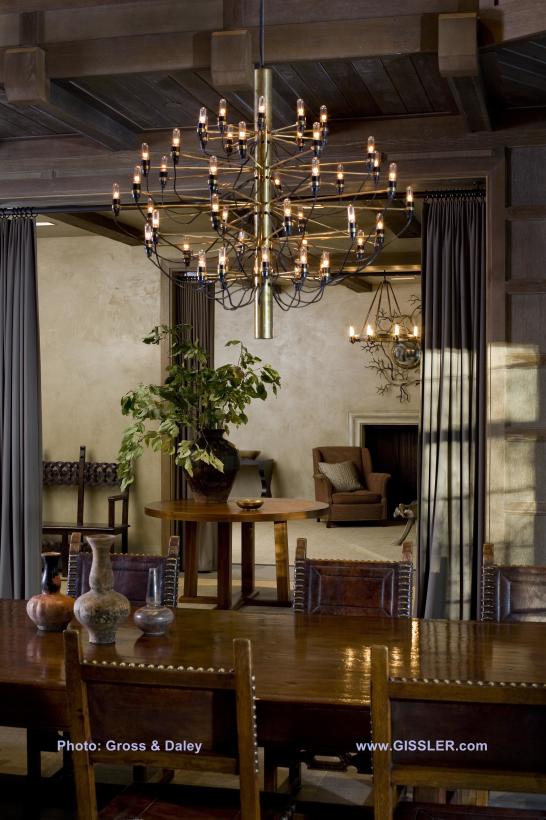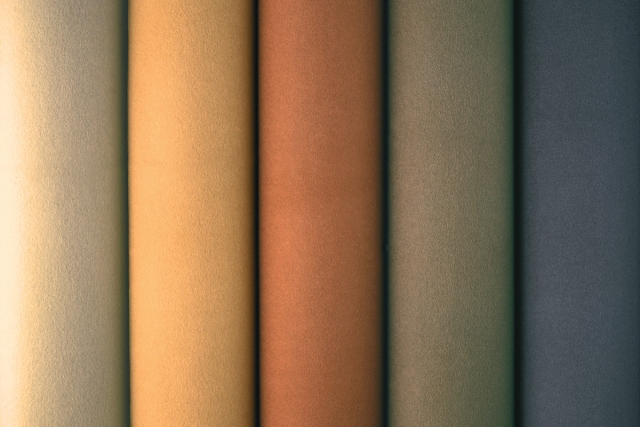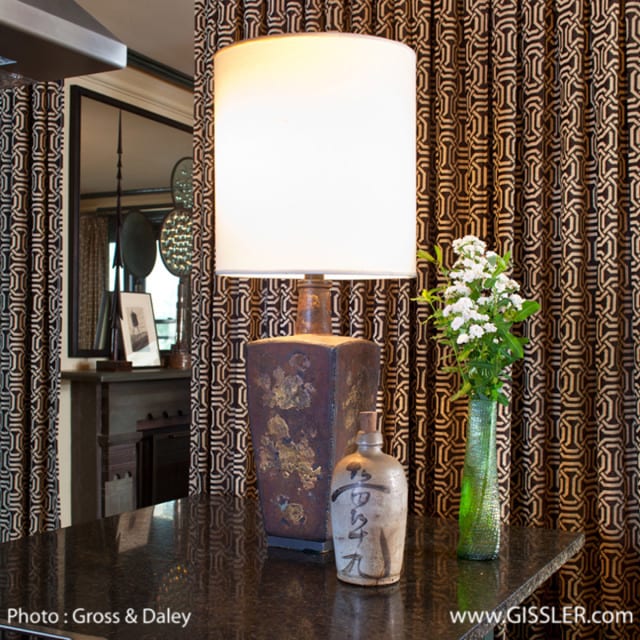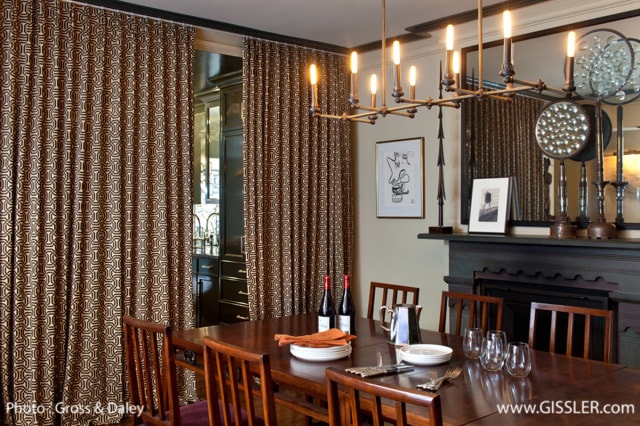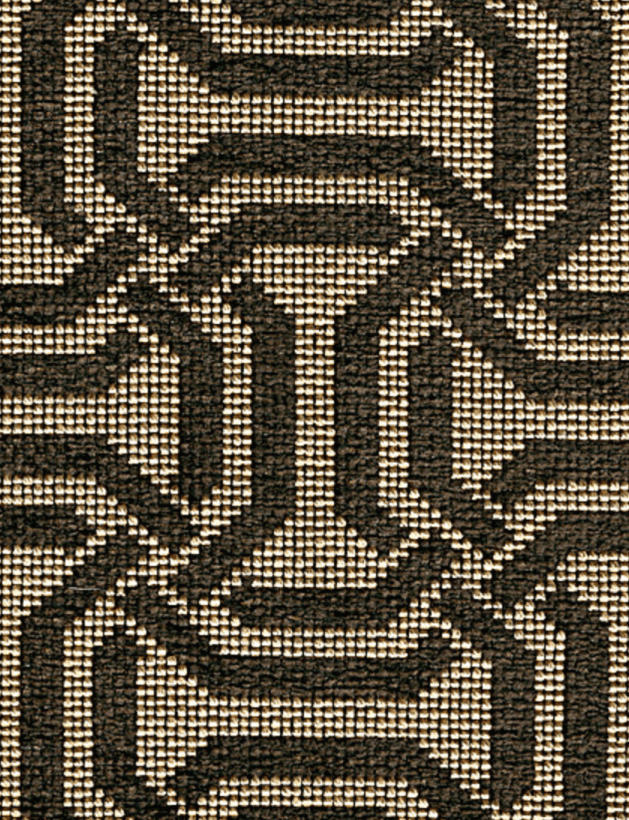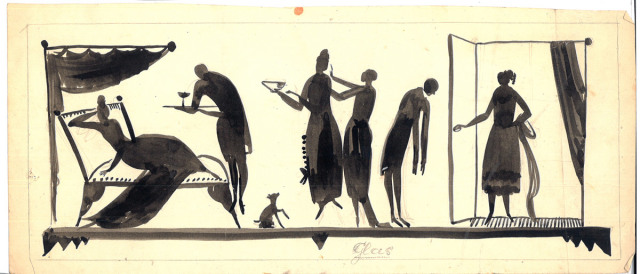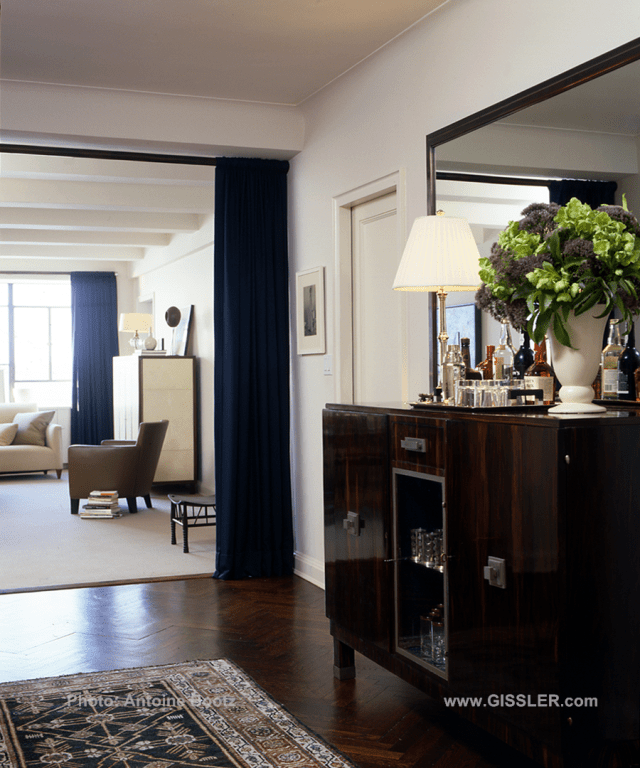
Portières were an essential element in homes of the high Aesthetic Movement of the 19th century, and have long been of interest to me. These curtains, hung in a doorway or over the doorless entrance to a room, add warmth and style. I have sought to find ways to utilize them in contemporary applications, and regularly include the idea of portières in my ‘kit of possible parts’ in creating homes for my clients….
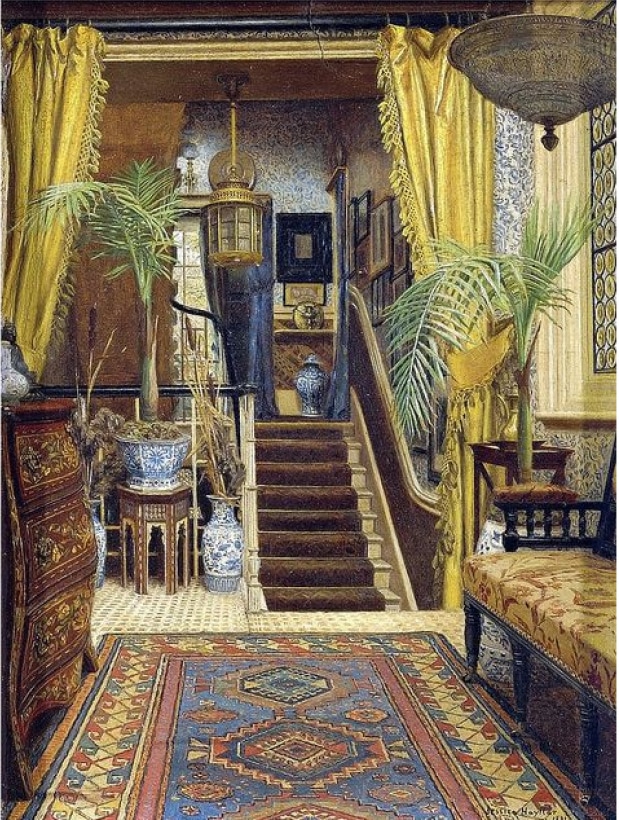
During the Aesthetic Movement of the late 19th century, it was common in wealthier households to use exuberant portières – they became part of the long list of ‘must-haves’ for a stylish home. Often made of heavy rich materials such as velvet or brocades, portières became yet another element to adorn with tassels and trims.
Looking at this image of an over-the-top Victorian interior one might wonder how it is even possible, or why would you apply this notion in a contemporary interior?
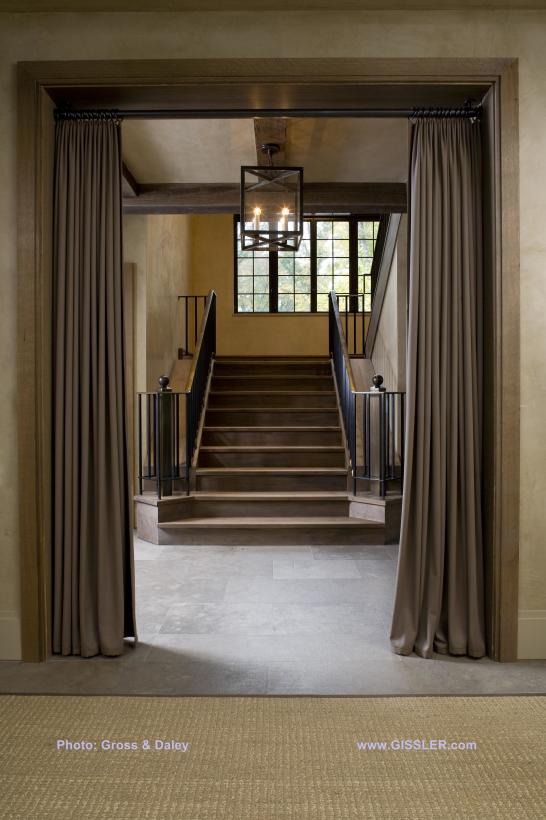
Unlike the details of the Victorian precedent I have never used ‘tassels and trims’, finding a cleaner, leaner and more architectural approach to portières more appealing.
I like to use them as a means of softening a room both aesthetically and acoustically – and for adding layers between rooms. In the country home above I used portières in the doorways of the primary public rooms made with Gretchen Bellinger’s incredible ‘Limousine Cloth’.
‘Limousine Cloth’ from Gretchen Bellinger in all the sublime and understated colors.
I like furnishings and objects of all periods of decorative arts history that at once are expressive of their decorative roots, and that when seen in a new light, belie their roots (the use of portières predates the era of Victorian madness.)
The name ‘portière’ comes from the French word for door – ‘porte’. The idea reached England by way of France where it was originally called ‘rideau de Porte’, or door curtain. There are some sources that suggest that the idea of what we now call portières was seen as early as the 4th century in Asia, and traveled to Europe employed as a means of controlling drafts during cold weather.
.
These next two images are from my duplex apartment in a small townhouse in Brooklyn Heights. It is a fantastic apartment in many ways and feels like a house: however you enter directly into the kitchen which is open to the dining room and sitting area.
I generally do not like kitchens that are open to the dining area – when I sit down to eat I really do not want to see the chaos left in the kitchen, or the appliances. To address this ‘issue’ I added a large two panel curtain tailored from the same textile I used for the window curtains.
View from inside the Kitchen, with the counter treated as a table surface with a table lamp and decorative objects.
The portier in its closed position as seen from the Dining Room keeps the chaos of the Kitchen ‘invisible’, and as I mentioned, the three windows in the room have curtains made from the same fabric, making the room visually cohesive and acoustically appealing.
Pollack Associates fabric ‘Interweave’ is a double-sided reversible jacquard weave (made in the United States) that hangs beautifully as curtains.
.
Another very rich period of architecture and decorative arts history that is of interest to me is the Vienna Secession. The ‘Secession’ was a group of visual artists, architects and designers whose modern ideas and aesthetics were rejected but the prevailing ‘academy’. As a group, these forward thinkers seceded (hence the name) and struck out as an independent group: their mission was to pursue a new, more modern aesthetic.
In 1903 Josef Hoffmann and others established the Wiener Werkstatte – a production community to produce the furnishings and decorative objects, and printed matter of the Secession.
Recently I purchased this c.1918 ink drawing from the descendents of its creator Lili Jacobsen Taubes (1895-1987), drawn when she was working at the Wiener Werkstatte. The drawing illustrates a bourgeois setting with many ‘domestics’ catering to the needs of a reclining woman and others; we see two portiers, one near the reclining diva, and the other in the doorway.
As mentioned above, aside from the aesthetic and acoustical benefits of portiers, an early use and practical advantage of portiers is controlling cold winter drafts. I am looking to integrate this ‘draft management’ strategy in my still-pretty-new-likely-to-be-drafty-very-old-house in Connecticut.
I look forward to sharing the final results of this project in a later post.

